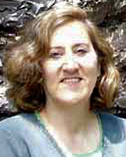
Linda R. Manzanilla
Universidad Nacional Autonoma de Mexico
|
Primary Section: 51, Anthropology Membership Type:
International Member
(elected 2003)
|
Biosketch
Professor of the Institute of Anthropological Research of the National Autonomous University of Mexico (UNAM). She has participated actively in the formation of generations of archaeologists. Author and editor of 32 books, 210 articles and chapters, and 71 technical reports on subjects related to the emergence and change of early urban societies in Mesoamerica, Mesopotamia, Egypt, and the Andean Region. One subject that has been of her interest is the domestic life of the inhabitants of the first urban developments of archaic states, such as Teotihuacan, its government at the state and neighborhood level, as well as the detailed analysis of its multiethnic population and the movement of foreign raw materials and goods. She has excavated in Mexico (particularly at Teotihuacan and Cobá), Bolivia (Tiwanaku), Egypt (Ma’adi), Eastern Anatolia (Arslantepé) and Migdal (Israel). Mexican Academy of Sciences Award,1991; Alfonso Caso Award (INAH) in 1994 and 2013; Presidential Award of the Society for American Archaeology, 1999; international member of the National Academy of Sciences of the USA (2003); National University of Mexico Award (Premio UNAM,2003); Shanghai Archaeology Forum Award for her interdisciplinary research on the multiethnic population of the neighborhood center of Teopancazco in Teotihuacan (2015).
Research Interests
She is interested in unveiling how Teotihuacan, a huge multiethnic metropolis of Central Mexico, was ruled. She has proposed a co-rulership of four lords, coming from the four districts of the city. Since 2000 to the present, she has been excavating a huge palatial complex to the north of the Pyramid of the Sun at Teotihuacan: the palace of Xalla. As the results from her former research in a multiethnic neighborhood center of Teotihuacan (Teopancazco) were very important to assess the provenience of the migrants (through isotopic analyses), their activities through activity markers, the biological heterogeneity of this population through mitDNA, she is interested in applying the same methodology to Xalla.

